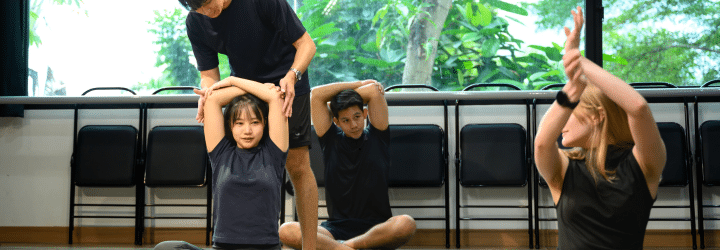Stiffness can limit movement, make daily tasks harder, and even increase the risk of injury. Whether you sit at a desk all day, are recovering from an injury, or want to stay active, regular stretching is one of the most effective ways to improve flexibility and mobility. Our Denver Physical Therapy and Injury Specialists team helps patients regain motion and comfort through evidence-based stretching and mobility exercises.

Why Stretching Matters for Mobility
Stretching helps maintain flexibility in your muscles and joints, allowing your body to move through its full range of motion. Over time, inactivity, aging, or repetitive movement patterns can cause tightness and limited motion. Consistent stretching increases circulation, supports joint health, and helps reduce soreness after activity.
1. Neck and Shoulder Stretch
Many people have tension in their upper back and neck from working at a computer or using mobile devices.
How to do it:
- Sit or stand tall.
- Slowly tilt your head toward your shoulder until you feel a gentle stretch along the side of your neck.
- Hold for 15 to 30 seconds, then repeat on the other side.
- Roll your shoulders backward in slow circles to loosen tension.
2. Cat Cow Stretch
This yoga-inspired movement helps improve flexibility in the spine and relieves lower back stiffness.
How to do it:
- Begin on your hands and knees with your wrists under your shoulders and knees under your hips.
- Inhale as you arch your back and look up toward the ceiling (Cow).
- Exhale as you round your back and tuck your chin toward your chest (Cat).
- Repeat slowly for 10 to 15 repetitions.
3. Hip Flexor Stretch
Tight hip flexors are common in people who sit for long periods, often leading to lower back discomfort.
How to do it:
- Kneel on one knee with your other foot flat in front of you.
- Keep your back straight and gently shift your hips forward until you feel a stretch in the front of your hip.
- Hold for 20 to 30 seconds on each side.
Reference: my.clevelandclinic.org/health/diseases/23978-hip-flexor-strain
4. Hamstring Stretch
Flexible hamstrings support healthy posture and prevent lower back strain.
How to do it:
- Sit on the floor with one leg extended and the other bent inward.
- Lean forward from your hips toward the extended leg, keeping your back straight.
- Hold for 20 to 30 seconds, then switch sides.
5. Calf Stretch
Tight calves can affect ankle movement and balance.
How to do it:
- Stand facing a wall and place your hands on it for support.
- Step one foot back, keeping your heel flat on the floor.
- Gently lean forward until you feel a stretch in your calf.
- Hold for 20 to 30 seconds, then switch legs.
6. Child’s Pose
A simple yet effective stretch for releasing back, hip, and shoulder tension.
How to do it:
- Start on your hands and knees.
- Sit your hips back toward your heels and stretch your arms forward.
- Rest your forehead on the mat and take slow, deep breaths.
- Stay in this position for 30 to 60 seconds.
Tips for Safe and Effective Stretching
- Warm up your muscles before stretching with light movement such as walking or marching in place.
- Avoid bouncing or forcing your body into a stretch.
- Breathe deeply and focus on gradual progress.
- Stretch regularly at least three to four times a week to maintain flexibility.
When to See a Physical Therapist
If you experience persistent stiffness, pain, or reduced range of motion, it may be a sign of an underlying issue. A licensed physical therapist can assess your movement patterns, identify areas of tightness, and design a program that helps restore proper mobility safely and effectively.
Final Thoughts
Regular stretching can make a meaningful difference in how your body feels and moves daily. The right exercises can help relieve tightness, improve flexibility, and support long-term joint health.
If you are struggling with stiffness or limited movement, schedule an appointment with Denver Physical Therapy and Injury Specialists to get personalized guidance and improve your mobility safely.
